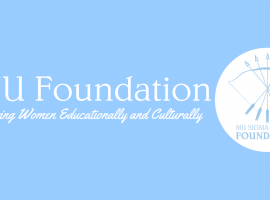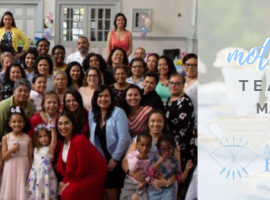Gender 101: Identity, Inclusion, And Resources
Repost via www.uua.org
10 Ways to be More Welcoming and Inclusive of Transgender People
- Avoid making assumptions about gender identity or sexual orientation.
- Respect a person’s identity and self-label, and respect a person’s chosen name and pronouns. Practice offering your own pronouns when you meet new people.
- Do not assume a trans person wants to speak about trans issues and only trans issues. Engage them in conversation and get to know them as you would anyone. Learn more about transgender identity and gender diversity on your own (consider starting with the resources below).
- Recognize that “transgender” is not a sexual orientation and educate yourself and others on the distinctions between sexual orientation and gender identity/expression. Don’t say “lesbian, gay, bisexual, and transgender” if you are only taking about sexuality. Recognize that a person can identify with more than one of those labels.
- Use terms that encompass all genders rather than only two (e.g., “children” instead of “boys and girls”; “people” instead of “women and men”; “siblings,” “kindred,” or “brothers and sisters and siblings of all genders” instead of “brothers and sisters”).
- Review your congregation’s policies and procedures. For example, are gender-exclusive groups inclusive of trans men and women? Do people with non-binary identities have a way to be involved? If you use forms that ask for gender, is that information necessary? If it is, make it an open field if possible, and if not, include the option “Transgender” as well as a fill-in-the-blank box, and allow people to check more than one box. Look into your congregation’s policies for youth gatherings, your Safe Congregation Policy, and more.
- Talk to children about gender diversity. Provide age-appropriate education around understanding one’s gender identity and how gender roles and norms play out in our society.
- Designate gender neutral bathroom(s) and label all bathrooms in a welcoming way. Make sure your signs throughout your space point the way to all bathroom options.
- Do continuing education for your congregation specifically on transgender issues and gender diversity. You might consider using one of the recommended curricula below, a film showing and discussion, a panel discussion, and/or a sermon on the topic.
- Learn about local and federal laws and how to change them if they are not inclusive (e.g., non-discrimination policies around employment, housing, credit, school and college admissions, and public accommodations; name changes; and gender marker changes). Follow the leadership of local and national transgender organizations.
Want more guidance in helping your congregation become transgender-inclusive? Check out Transgender Inclusion & Affirmation: Questions to Consider (PDF).
Basic Definitions About Gender Identity
Our culture tends to limit its understanding of gender to only two options: man and woman. Unitarian Universalism recognizes that there are more than two genders, and an infinite variety of gendered experience in the world.
Biological Sex
The biological attributes such as anatomy, chromosomes, and hormones that inform whether a person is male, female, or intersex. Where sex refers to biology, gender refers to the cultural and social understandings that are layered on top of biology.
Gender Identity
An individual’s internal sense of being a man, a woman, neither of these, both, and so on—it is one’s inner sense of being and one’s own understanding of how one relates to the gender binary. With the exception of agender people, who often do not have an internal sense of gender, most people have a gender identity.
Gender Expression
The ways in which a person manifests masculinity, femininity, both, or neither through appearance, behavior, dress, speech patterns, preferences, and more. This term refers to how a person expresses their gender identity or the cues people use to identify gender.
Gender Binary
A system of classifying sex and gender into two distinct and disconnected forms—male/man/masculine and female/woman/feminine—and assigning all bodies, identities, roles, and attributes to one side or the other. The gender binary is dependent on policing people to make sure they don’t digress from the system in appearance, anatomy, or behavior.
Sexual Orientation
The gendered pattern of a person’s sexual attractions, or the gender of the people a person is attracted to. Gender identity refers only to a person’s own self. Gender and sexual orientation are often lumped together, despite being different, because of societal expectations around sex, gender, and expression. Transgender individuals can be lesbian, gay, bisexual, queer, straight, or any other sexual orientation. Everyone has a sexual orientation.
Transgender
First coined to distinguish gender benders with no desire for surgery or hormones from transsexuals, those who desired to legally and medically change their sex, more recently transgender, trans, and/or trans* have become umbrella terms popularly used to refer to all people who transgress dominant conceptions of gender, or at least all people who identify themselves as doing so. The definition continues to evolve.
Cisgender
A term that is becoming increasingly popular to describe people who are not trans or gender variant—in other words, those whose gender identities, presentations, and behavior “match” (according to the gender binary) the sex they were assigned at birth. Cis is a prefix with roots that mean “on the same side”; trans and cis are neutral descriptors.
Cross-Dressing and Drag
Cross-dressing refers to occasionally wearing clothing of the “opposite” gender, and someone who considers this an integral part of their identity may identify as a crossdresser. Drag queens and drag kings are performers who offer exaggerated, performative presentations of gender and often cross-dress performatively. Cross-dressing and drag are not necessarily tied to erotic activity or sexual orientation.
Genderqueer / Third Gender / Gender Fluid / Two Spirit
Terms used by people who identify as being between and/or other than man or woman. They may feel they are neither, a little bit of both, or they may simply feel restricted by gender labels. Two spirit is a complex term derived from some Native North American cultures and can sometimes mean a mixture of masculine and feminine spirits in the same body.
Gender Non-Conforming / Gender Variant
General terms for people who bend gender in some way and/or have non-binary gender identities.
Intersex
A general term used for a variety of genetic, hormonal, or anatomical conditions in which a person’s reproductive or sexual anatomy doesn’t seem to fit the typical definitions of female or male. When a child is born intersex, many doctors and parents respond with panic and rush to correct the perceived problem with surgery, which often causes mental and physical difficulties later in life. Some intersex individuals identify as transgender or gender variant; others do not.
Transsexual
Historically this term has been used to refer to individuals who have medically and legally changed their sex, or who wish to do so. Most transsexual people feel a conflict between their gender identity and the sex they were assigned at birth. Other labels used within this group include MtF (male-to-female) or trans woman, and FtM (female-to-male) or trans man.
Transition
The complex process of authentically living into one’s gender identity, often but not always including leaving behind one’s assigned birth sex. A transition may include coming out to one’s family, friends, and/or co-workers; changing one’s name and/or gender markers on legal documents; hormone therapy; and/or possibly (though not always) some form of surgery. Not all trans people identify with the word transition and it should furthermore never be assumed that transition is a process to be “completed.” Some people who have transitioned no longer consider themselves to be transsexual or transgender and rather identify only as a man or a woman (occasionally “of transgender experience”). Others identify as a trans man or a trans woman.
Coming Out vs. Disclosure
Coming out (of the closet) refers to openly stating one’s identity (usually sexual orientation). Being outmeans being open about one’s identity. Being outed means someone else has disclosed one’s identity, usually without permission. Coming out is often a liberating experience for people who have previously hidden their identity; it can lead them to feel like they can be their authentic selves. However, trans people who have transitioned are not “in the closet” about their identity, so telling people that they are trans is a disclosure and is different than coming out. Trans people are not “fooling” or “deceiving” anyone about their identity by presenting themselves authentically as men or as women.




There are no comments